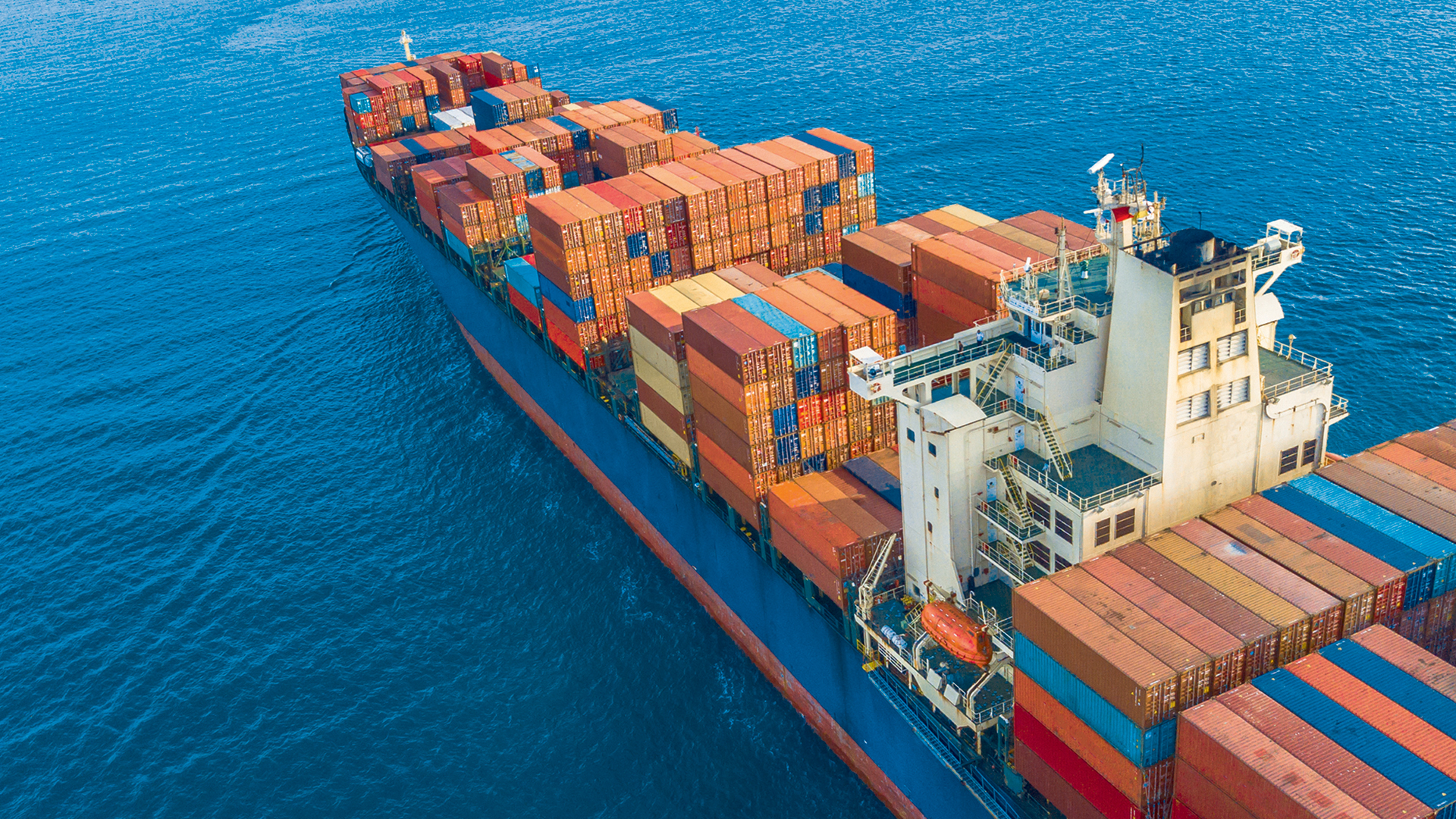Introduction
On 21 November 2023 and following extensive consultation periods, the amendment to the Climate Delegated Act (Delegated Regulation (EU) 2021/2139 of 4 June 2021) (the Climate Delegated Act) was formally adopted by the European Commission and published in the EU Official Journal (Delegated Regulation (EU) 2023/2485 of 27 June 2023) (the Climate Delegated Act Amendment).
The Climate Delegated Act Amendment, which came into effect at the start of 2024, includes amendments to the shipping technical screening criteria in the Climate Delegated Act and impacts which shipping activities can be classified as “environmentally sustainable”. These changes are significant for both ship owners and financiers, both in terms of reporting obligations as well as for the implications for access to green finance.
What is the EU Taxonomy?
The EU Taxonomy is a classification system that establishes a list of environmentally sustainable economic activities. It was introduced in recognition of the need to access private capital to support the transition to a low carbon economy. The criteria prescribed by the EU Taxonomy Regulation (EU) 2020/852 (the Taxonomy Regulation) are intended to encourage investor confidence that investments will have a positive environmental impact. Article 9 of the Taxonomy Regulation sets out a number of environmental objectives: an economic activity must meet at least one of these in order to qualify as environmentally sustainable.
These are:
- climate change mitigation;
- climate change adaptation;
- the sustainable use and protection of water and marine resources;
- the transition to a circular economy;
- pollution prevention and control; and
- the protection and restoration of biodiversity and ecosystems.
It then provides that economic activities can be included within the Taxonomy Regulation as “environmentally sustainable” if they respect four overarching conditions (Article 3), namely they:
- make a substantial contribution to one or more of the six environmental objectives above;
- do no significant harm to any of the other environmental objectives;
- are carried on in compliance with certain safeguards (such as compliance with certain international human rights and labour standards); and
- comply with the technical screening criteria set out in delegated legislation to the Taxonomy Regulation.
Enabling verses Transitional activities
To contribute to the overall objective of promoting sustainability, the Taxonomy Regulation introduces the concept of “enabling activities” and “transitional activities”.
Enabling activities are those activities that contribute substantially to one or more of the environmental objectives provided certain conditions are met.
The main shipping-related enabling activities which have been included in the Taxonomy Regulation are the “construction, modernisation, operation and maintenance of infrastructure that is required for zero tailpipe CO2 operation of vessels or the port’s own operations, as well as infrastructure dedicated to transshipment” (Section 6.16 of Annex 1 of the Climate Delegated Act (as amended by the Climate Delegated Act Amendment)).
The European Commission has noted that, at present, the ability of the shipping industry to make a substantial contribution to climate change mitigation is technologically constrained and so most other shipping activities do not qualify as “enabling activities”.1 The European Commission has however recognised that the shipping industry has the potential to play a significant role in reducing carbon emissions and has therefore agreed to include certain shipping activities within a separate category of “transitional activities”.
Transitional activities relate only to the climate change mitigation objective, and are defined as those economic activities in industries such as shipping, for which there is no technologically and economically feasible low-carbon alternative but which may still be considered as making a substantial contribution to climate change mitigation for the purposes of the Taxonomy Regulation provided that the activity:
- has greenhouse gas emission levels that correspond to the best performance in the sector or industry;
- does not hamper the development and deployment of low-carbon alternatives; and
- does not lead to a lock-in of carbon-intensive assets considering the economic lifetime of those assets.
By including certain shipping activities within the framework of the Taxonomy Regulation as transitional activities, the European Commission is hoping to support the transition to zero-emissions vessels, including R&D on alternative technologies, fuels, and infrastructure.
Shipping technical screening criteria
Annex 1 of the Climate Delegated Act (as amended by the Climate Delegated Act Amendment) proposes technical criteria to determine which kind of shipping-related economic activity would constitute an environmentally sustainable economic activity for the purposes of the Taxonomy Regulation.
The shipping activities which could potentially qualify as environmentally sustainable economic activities are divided into the following categories, all of which (apart from Section 6.16) are transitional activities:
| 1. |
Inland passenger water transport |
Section 6.7 |
| 2. |
Inland freight water transport |
Section 6.8 |
| 3. |
Retrofitting of inland water passenger and freight transport |
Section 6.9 |
| 4. |
Sea and coastal freight water transport, vessels for port operations and auxiliary activities |
Section 6.10 |
| 5. |
Sea and coastal passenger water transport |
Section 6.11 |
| 6. |
Retrofitting of sea and coastal freight and passenger water transport |
Section 6.12 |
| 7. |
Infrastructure enabling low carbon water transport* (enabling activities) |
Section 6.16 |
The activities which are covered in Section 6.7 – 6.12 include the “purchase, financing, leasing, rental and operation” of the types of vessels mentioned in the categories above. Each Section also includes a supplementary reference to a NACE Code (which is a classification system for economic activities used in the EU) to assist in identifying which activities are captured.
Each Section outlines the technical screening criteria for the purposes of (i) making a substantial contribution to the relevant environmental objective and (ii) doing no significant harm to any of the other environmental objectives.
Extension of criteria
The original set of technical screening criteria was published in the Climate Delegated Act in 2021.The European Commission consulted with various stakeholders on amendments to this, leading to the finalisation and publication of the Climate Delegated Act Amendment.
The changes made to Section 6.10 of Annex 1 (which sets out the technical screening criteria that would need to be complied with for the purchase, financing, leasing, rental or operation of sea and coastal freight water transport vessels (or vessels for port operations and auxiliary activities)) are of key relevance to the shipping industry. These changes expanded the technical screening criteria for making a substantial contribution to climate change mitigation under Section 6.10 by adding two additional options for compliance, being:
(i) vessels that are able to run on zero direct (tailpipe) CO2 emission fuels or on fuels from renewable sources, having an Energy Efficiency Design Index (EEDI) 20 % below EEDI requirements on 1 April 2022, provided they are able to plug-in at berth and where relevant, use state-of-the-art measures to mitigate methane slippage emissions; and
(ii) vessels with an Energy Efficiency Existing Ship Index (EEXI) 10% below the EEXI requirements on 1 January 2023 with yearly average greenhouse gas intensity not exceeding certain thresholds set out in Annex 1.
Prior to these changes only vessels with zero direct (tailpipe) CO2 emissions would qualify, with a buffer period applying until the end of 2025 to allow limited direct emissions, subject to the vessel’s use.
The addition of these options widens the scope for the type of vessels that can potentially qualify as taking part in transitional environmentally sustainable economic activities. In particular, pursuant to the second additional option introduced, more vessels running entirely on fossil fuel (without alternative fuel capability) could potentially benefit, although it is worth noting that vessels which are dedicated to the transport of fossil fuels are still excluded. These additional options apply from 1 January 2026 and there is no time limit on their application.
There has been some criticism of these changes from environmental groups over concerns that expanding the scope of the technical screening criteria means that it could include some vessels which do not offer meaningful environmental benefits. For example, there are some existing LNG powered ship designs which have become immediately eligible as a result of the changes, whilst not achieving significant reductions in emissions. Some critics have suggested that the new criteria open up the possibility of ‘greenwashing’. Five non-governmental organisations have launched a legal challenge against the changes, which is the first step in a process that could lead to action before the European Court of Justice.2
In various studies on greening the maritime sector, the European Commission3 acknowledged the delicate balance between seeking to address the challenges the shipping sector currently faces in accessing green finance (as well as the technological constraints and practical realities of the green transition in shipping) whilst also identifying measures to avoid any potential risk of greenwashing. Whether the Climate Delegated Act Amendment achieves this is open to debate.
Why does this matter?
In addition to providing greater clarity as to what projects can be described as sustainable, the Taxonomy Regulation also performs a regulatory function.
CSRD – the corporate sustainability reporting directive
The corporate sustainability reporting directive (CSRD), which entered into force in the EU on 5 January 2023, has expanded the ambit of entities required to provide certain non-financial information as part of their annual reporting. As such, this requirement will now apply to (amongst others):
- all companies listed within the EU (including listed public interest SMEs);
- unlisted large EU undertakings; and
- certain non-EU companies where their securities are admitted to trading on an EU regulated market, they have EU subsidiaries that are large undertakings or public interest SMEs or EU branches which generate substantial turnover.
The date on which the reporting requirements will become applicable differs per kind of entity.
Companies subject to the CSRD disclosures will have to prepare their reports in accordance with the European Sustainability Reporting Standards (ESRS). The first set of standards was adopted in December 2023 and applies to all companies within the scope of CSRD.4 The legislation also foresees development of sector-specific standards in due course; standards for the shipping sector are not yet under development.
Pursuant to the Taxonomy Regulation and as part of their non-financial reporting, those entities will be required to disclose:
(a) the proportion of their turnover derived from products or services associated with economic activities that qualify as environmentally sustainable; and
(b) the proportion of their capital expenditure and the proportion of their operating expenditure, in each case related to assets or processes associated with economic activities that qualify as environmentally sustainable.
Environmental sustainability is to be assessed by reference to the Taxonomy Regulation.
Other companies that do not fall under the scope of CSRD can decide to disclose this information on a voluntary basis to get access to sustainable financing or for other business-related reasons.
GAR – Green Asset Ratio
In addition, the European Commission and European Banking Authority (EBA) are aiming to encourage financial institutions to finance sustainable activities through the disclosure of a Green Asset Ratio (GAR).
Following the EBA’s technical advice, the European Commission’s delegated act on taxonomy-aligned disclosures for financial and non-financial undertakings requires financial institutions to disclose their GAR to show the extent to which the assets financed and invested are in taxonomy-aligned economic activities (including loans and advances, debt securities, equities, and repossessed collaterals) as a proportion of total covered assets.
The GAR is intended to lead to greater transparency around what financial institutions are financing, which may result in investors applying pressure on them to shift their loan books towards exposures to companies that are involved in taxonomy-aligned sustainable economic activities. The GAR may therefore have the effect of encouraging financial institutions to tighten credit supply and increase loan rates offered to companies involved in activities that are not taxonomy-aligned. There is also the possibility of the GAR evolving in the future to require financial institutions to hold additional capital against exposures to non-green activities to take account of the sustainability risks. More generally, there is the potential for inclusion of ESG risks into Pillar 2 prudential requirements, which allow supervisors to require financial institutions to hold additional capital against additional risks (and this could include ESG risks in future).
Challenges and opportunities for the shipping industry
In order for entities that fall within the scope of the CSRD to be able to provide accurate information in their annual reports as well as, in the case of financial institutions, an accurate GAR, they will need to gather information from their shipping customers. This may be relatively straightforward for large multinational shipping customers that are already under an obligation to comply with the CSRD disclosure requirements but will prove to be much more challenging for small to medium-sized shipping companies.
For further information regarding the CSRD reporting obligations please refer to the following articles:
The Corporate Sustainability Reporting Directive and its impact on EU and non-EU companies | Global law firm | Norton Rose Fulbright
EU Commission to delay adoption of rules under the Corporate Sustainability Reporting Directive | Deutschland | Global law firm | Norton Rose Fulbright
Shipowners, operators and financiers will need to consider the implications of owning and financing vessels that do not fall within the Taxonomy Regulation criteria. For owners this could mean limited or more expensive financing options as well as reputational risk through disclosures under CSRD. Financial institutions will also have to consider reputational risks through CSRD and/or GAR disclosures as well as the impact on their access to investor capital.
The additional screening criteria made available by the Climate Delegate Act Amendment represents an opportunity for some operators to align more of their fleet with the Taxonomy Regulation and potentially improve their reputation and access to ‘green’ capital. The same can be said for financiers with exposure to such owners. The Climate Delegate Act Amendment could also have an impact on newbuild orders and second-hand purchases, with owners now having the option of sticking to more conventional fuel vessels that fall within the Taxonomy Regulation criteria. In addition to being cheaper, this could be particularly attractive for owners and financiers who are uncertain on which alternative fuel technology to invest in at this stage.
It is likely that the Taxonomy Regulation and related acts will become increasingly relevant to overall future strategy and decision making in shipping. Industry stakeholders should consider this, bearing in mind that the legislation could be subject to further change in the coming years.





